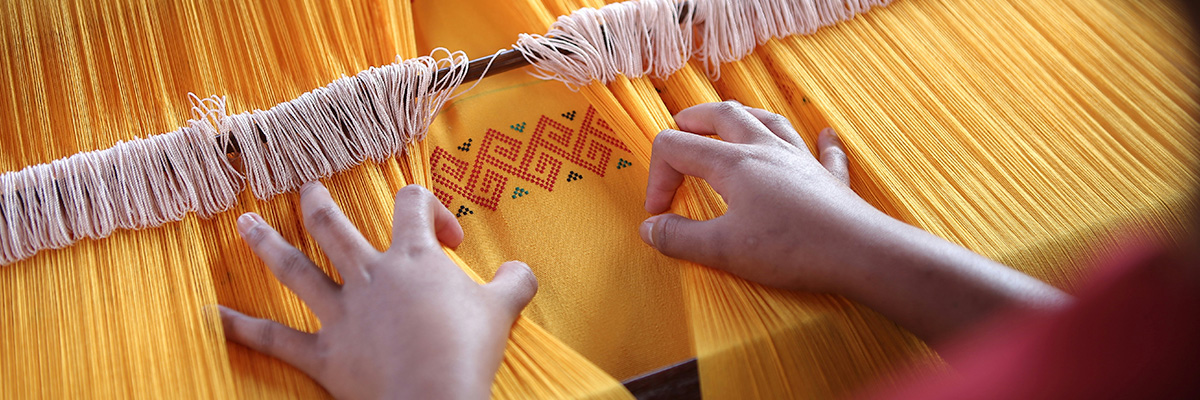Mastering the Art of Hand Weaving: A Comprehensive Guide
Hand weaving is an ancient art that dates back to Neolithic times, approximately 12,000 years ago. Cultures from all corners of the globe have used this technique to create functional and decorative items. It’s a craft that not only connects us to our past but also allows us to create beautiful and unique pieces with our hands. Learning hand weaving techniques can be deeply satisfying, allowing you to engage with a rich cultural tradition and create with a level of detail and personalized expression that’s hard to match.
The importance of learning hand weaving techniques lies not only in the preservation of this ancient craft but also in the development of patience, precision, and creativity. Each thread woven into the fabric represents a moment of focus, a stroke of inspiration, and a step towards completing a unique work of art. It’s a skill that requires time and practice, but the results are more than worth it.
Getting Started with Hand Weaving
Choosing the right materials is the first crucial step in hand weaving. The type of loom, yarn, and tools you select can significantly impact the outcome of your work. Looms vary in size and complexity, from simple frame looms suitable for beginners to floor looms designed for large projects. Yarns also come in a variety of materials and weights, each suited to different types of projects. Tools such as shuttle, heddle, and reed are also essential for hand weaving.
Setting up your workspace for hand weaving is another critical aspect. A comfortable and well-lit environment can make the weaving process more enjoyable. Your workspace should have enough room for your loom and other tools, and be free from distractions. Organize your materials for easy access, and ensure your seating position doesn’t cause strain during prolonged weaving sessions.
Basic Hand Weaving Techniques
Basic weaving techniques such as plain weave, twill weave, and basket weave form the foundation of hand weaving. The plain weave, also known as tabby weave, is the simplest and most common form of weaving, in which the weft thread crosses the warp thread alternatively. Twill weave creates a pattern of diagonal parallel ribs, offering more texture and thickness than the plain weave. The basket weave, on the other hand, has a checkerboard pattern created by grouping warp and weft threads.
Each technique requires a series of steps that involve setting up the loom, threading the heddle, and weaving the yarn. Start by practicing these basic techniques until you feel comfortable, then gradually challenge yourself with more complex patterns.
Advanced Hand Weaving Techniques
Once you’ve mastered the basic techniques, you can progress to more complex hand weaving techniques like leno weave, lace weave, and tapestry. Leno weave involves twisting the warp threads around each other, creating a durable and open structure typically seen in scarves and shawls. Lace weave, as the name suggests, creates a delicate, open weave ideal for decorative items. Tapestry, a form of weft-faced weaving, allows you to create intricate, pictorial designs.
To master these advanced techniques, patience and practice are key. Don’t be disheartened if you make mistakes; they’re part of the learning process. Remember to keep your tension consistent and take breaks to prevent fatigue.
Troubleshooting Common Hand Weaving Issues
Hand weaving isn’t without its challenges. Common problems like tension issues and broken threads can disrupt your weaving process. Tension issues can lead to uneven fabric, while broken threads can create gaps or distortions in your weave. Both issues can often be resolved by carefully adjusting your loom or replacing the broken threads.
Other weaving mistakes, such as missed threads or incorrect patterns, can usually be fixed by reversing your weaving until you reach the error. It’s essential to check your work regularly and fix mistakes as soon as you spot them to prevent larger problems down the line.
Finishing and Displaying Your Hand Woven Projects
Once you’ve completed your hand-weaving project, the final steps are blocking and finishing. Blocking involves wetting your woven piece and shaping it to the desired dimensions while it dries. This process helps to even out the fabric and set the weave. Finishing can include various methods, such as hemming or fringing the ends.
Displaying your hand woven creations is a rewarding part of the process. Whether it’s a wall hanging, a table runner, or a wearable item, your handwoven piece can add a unique, personal touch to your home or wardrobe. Consider different ways of showcasing your work, from mounting it on a wall to incorporating it into your home decor.
Resources for Further Learning
Expanding your hand weaving skills requires continuous learning. Consider enrolling in online courses, reading books on hand weaving, or attending workshops. These resources can provide you with new techniques, inspiration, and expert tips.
Joining communities and forums for hand weavers can also be beneficial. These platforms offer opportunities to connect with fellow weavers, share your work, ask questions, and receive feedback. They can be a great source of support and inspiration as you continue your hand weaving journey.
Conclusion
Mastering the art of hand weaving requires patience, practice, and a willingness to learn. From choosing the right materials and setting up your workspace to learning basic and advanced techniques, every step of the process contributes to your growth as a weaver. Troubleshooting issues, finishing your projects, and proudly displaying your hand woven creations are all part of this rewarding journey.
As you continue to explore and practice hand weaving techniques, remember that every thread you weave brings you closer to mastering this ancient art. It’s a journey of creativity and self-expression, connecting you to a rich tradition that spans millennia. So, keep weaving, keep learning, and most importantly, enjoy the process.
FAQ
1. What is the importance of learning hand weaving techniques?
Learning hand weaving techniques is important for preserving an ancient craft, developing patience, precision, and creativity, and creating unique works of art.
2. What are some basic hand weaving techniques to start with?
Some basic hand weaving techniques to start with include plain weave, twill weave, and basket weave, each offering different textures and patterns.
3. How can common hand weaving issues like tension problems be resolved?
Common hand weaving issues like tension problems can be resolved by carefully adjusting your loom or replacing broken threads.
4. What are some resources for further learning hand weaving techniques?
Resources for further learning hand weaving techniques include online courses, books, workshops, and joining communities and forums for hand weavers.



